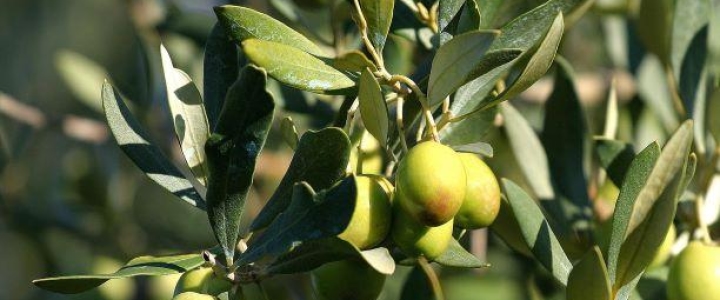
PHYTOSQUALAN: plant-sourced squalane to replenish skin moisture
July 28, 2020
Squalene is a natural lipid, found in plants and animals, and a major component of human sebum and hydrolipidic film. It helps to create a permeable barrier preventing moisture loss.
It was named after the Squalidae family (Sharks), when large amounts were found accumulating in their liver, helping them regulate their buoyancy.
The replacement of shark squalene has become a priority in terms of biodiversity safeguarding and ethical sourcing.
Sophim offers natural, plant-based and sustainable sources of squalane: PHYTOSQUALAN & PHYTOSQUALAN VG.
Both are non GMO and Cosmos approved.
Squalane/Squalene, what is the difference?
Squalene (C30H50) is a triterpene hydrocarbon, highly unsaturated (six carbon double bonds (C=C) ), making it the most unsaturated molecule within the lipids. [1]
It is naturally found in living beings, but has a strong odor, and is highly sensitive to oxidation. Not the best molecule to use in cosmetic products!
After complete hydrogenation of the squalene (saturation of the double carbon bonds by adding hydrogens), the alkene becomes an alkane, named “squalane”.
Stable molecule, absence of toxicity, resisting oxidation, odorless and colorless: PHYTOSQUALAN is ideal for cosmetic applications!
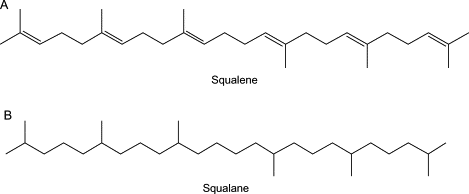 [2]
[2]
PHYTOSQUALAN: naturally sourced from olives
Although squalene is found in a very high amount in shark livers, it is also found in all plants and animals, as a biochemical intermediate of natural sterols (cholesterol, steroids hormones, and vitamin D).
Squalene is especially found in olives, among the nonsaponifiable fraction, at concentrations ranging 0.4–0.8% [3] and its squalane derivative is available in PHYTOSQUALAN.
Olive tree: origins of a sacred tree
The most well-known symbolic connotation for the olive, and more specifically the olive branch, is peace (and dates back to ancient Greek mythology). It’s the reason why the UN picked it as their emblem.
First the ancient Greeks, then Romans contributed to the spread of the olive tree throughout the territories of their colonies and empire, olive oil became a great trading commodity.
Many Greek philosophers studied the medicinal properties of this sacred tree.
The olive oil was used for many other purposes: cleaning the body, fuel, medicine,... You can learn more here (opens new window).
Today, more than 95% of olive trees are still planted in the Mediterranean region and it’s part of the mediterranean diet and culture.
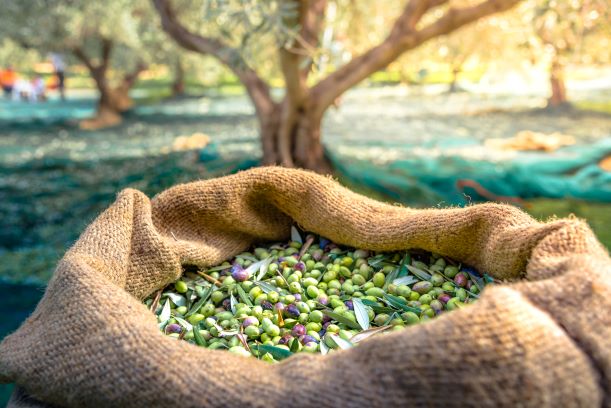
PHYTOSQUALAN is sourced in Spain, where the squalene is extracted during the deodorization step of the olive oil production.
The squalene is then transformed in France into squalane, thanks to Sophim expertise, for the high quality product, without solvent.
Having a local concentration of the squalene (right by the olive groves) reduces the quantity of material shipped to France, for a low carbon footprint.
Because both the quality and the impact on the environment matter!
A sustainable sourcing
Olive groves: naturally sustainable
Olive trees grow on arid and rocky soils and survive under drought conditions and strong winds.
Olive groves don’t need much water (70% of them are satisfied with rainwater worldwide) and they contribute to slowing down soil erosion.
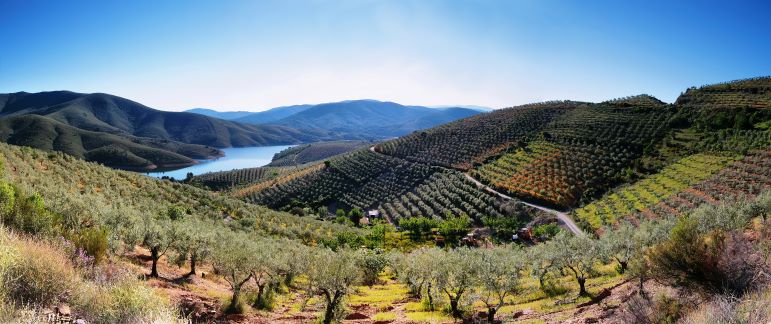
Olive industry: a circular economy
A circular economy is about producing goods/services in a sustainable manner by limiting the consumption and waste of resources and the production of waste.
Both olive tree culture and the olive oil industry produce large amounts of byproducts.
- Pruning and harvest residues: twigs and leaves, used as a source of nutrients for animals.
- Oil extraction byproducts: olive cake and liquid wastes
A lot of initiatives have been developed to use by products generated from the olive oil industry:
- Environmentally friendly bioplastics from olive seeds,
- Biodiesel production, for greener and cleaner energy,
- Micro-beads from olive pomace for exfoliation,
- Biosorbents of heavy metals to decontaminate sewage [4]
- ...
Sophim involved in byproducts valorization
Sophim also takes part in this circular economy, by valorizing squalene, found in the nonsaponifiable fraction of olive oil, along with vitamin E,...extracted from olive oil during the deodorization step.
Byproducts generated by Sophim, like triglycerides, are also offered to other industries to produce biodiesel, soaps,...

Multiple benefits in the beauty & personal care
Skin benefits
Squalene is one of the most important human skin cell lipids, and accounts for up to 13% of total sebum lipids (3rd component after triglycerides and wax esters), protecting skin by regulating its moisture. [1]
However, after the age of around 30 years, the levels of squalene production in the body decrease, which may contribute to dry and uncomfortable skin. [3]
PHYTOSQUALAN restores the lipidic barrier (hydrolipidic film) and provides visible benefits to the skin (tested in vivo at 5 and 10%):
→ Provides significant moisturization.
→ Restores the skin barrier function by reducing the TEWL on damaged skin.
→ Restores skin firmness and elasticity.
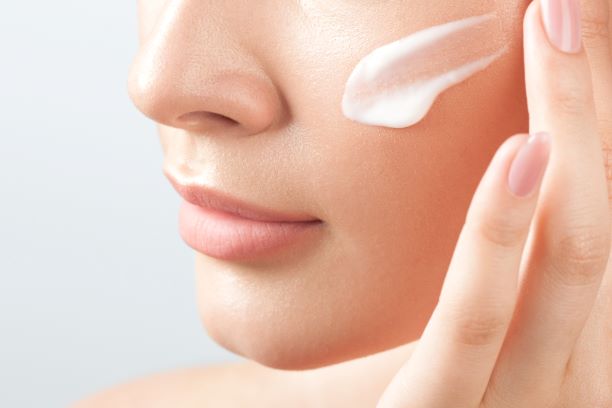
Benefits in beauty products
Thanks to its high compatibility with the skin, PHYTOSQUALAN vectorizes active ingredients and enhances their efficacy in the final product.
PHYTOSQUALAN also helps to disperse pigments, ideal for make-up and sun care applications!
Being perfectly compatible with oils and lipophilic substances in general, PHYTOSQUALAN can be easily incorporated into an emulsion, giving an attractive, compact and “glossy” appearance.
Nice skin feel: nothing to do with Olive oil!
PHYTOSQUALAN skin feel is very different from the Olive oil one:
- Very soft
- High spreadability
- Quick penetration
- Non greasy
Just order a sample through the chat to feel for yourself!
PHYTOSQUALAN VG: another vegetable source now available!
While the squalene concentration in olive oil is one of the highest in the vegetal world (1.7–4.6 g/kg), some other vegetable oils produced on a large scale also contain squalene. This is the case for sunflower oil (0–0.19 g/kg) and soybean oil (0.03–0.2 g/kg) for instance. [5]
Sophim is now offering PHYTOSQUALAN VG, sourced from soy and sunflower oils, a non-GMO and COSMOS approved alternative.

INCI of PHYTOSQUALAN and PHYTOSQUALAN VG: Squalane
Questions? Samples?
Request the full presentation, samples, and more info in the chat!
Sophim's products are distributed in the USA by SEPPIC Inc.
Learn more about PHYTOSQUALAN on Sophim website (opens new window) For other locations, contact SOPHIM (opens new window).
References
[1] D.-M. Pham*, B. Boussouira*, D. Moyal† and Q.L. Nguyen. Oxidization of squalene, a human skin lipid: a new and reliable marker of environmental pollution studies
https://onlinelibrary.wiley.com/doi/pdf/10.1111/ics.12208
[2] https://www.sciencedirect.com/science/article/pii/B9780124160033000147
[3] Sethi A, Kaur T, Malhotra SK, et al. Moisturizers: The Slippery Road. Indian Journal Of Dermatology 2016; 61: 279-287. DOI: 10.4103/0019-5154.182427.
[4] https://www.sciencedaily.com/releases/2009/06/090603091304.htm
[5] Ovidiu Popa et Al. Methods for Obtaining and Determination of Squalene from Natural Sources https://www.hindawi.com/journals/bmri/2015/367202/